 by "ttyymmnn" (ttyymmnn)
by "ttyymmnn" (ttyymmnn)
Published 02/28/2017 at 12:35
 by "ttyymmnn" (ttyymmnn)
by "ttyymmnn" (ttyymmnn)
Published 02/28/2017 at 12:35
Tags: planelopnik history
; Planelopnik
STARS: 10
Welcome to This Date in Aviation History , getting you caught up on milestones, important historical events and people in aviation from February 25 through February 28.
!!! UNKNOWN CONTENT TYPE !!!
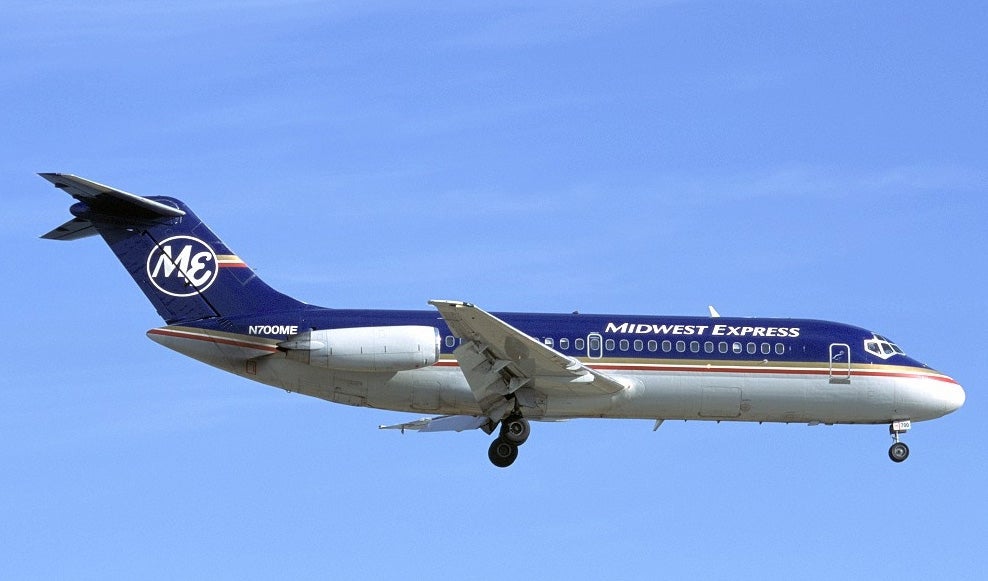
February 25, 1965 – The first flight of the McDonnell Douglas DC-9. The period following WWII was one of rapid technological development, as piston engine technology gradually gave way to jet engine technology. De Havilland was the first to make a jet-powered airliner with their Comet , which entered service in 1952, while other companies clung to the proven radial engines of WWII. Still others began to implement the turboprop engine, which was, in some ways, the best of both worlds. By the 1960s, de Havilland, Boeing and Douglas were all fielding large four-engine airliners powered by either turbojets or turbofans. Douglas’ entry into that category was the DC-8 , which entered service in 1959. But it soon became apparent that, while high passenger capacity was beneficial for flying between large airports, there was also a need for smaller airliners to carry fewer passengers on short- to medium-range flights operating from smaller airports. In the early 1950s, Douglas had started work on the Model 2067 , basically a smaller DC-8, but the airlines were not interested and Douglas dropped the idea. In 1960, Douglas entered into an agreement with Sud Aviation of France to sell and support the Caravelle in the US, but when orders for the Caravelle didn’t materialize, Douglas decided to forge ahead on its own. Thus, it may not be a coincidence that, when the design of the DC-9 was finalized in 1962, it bore such a strong resemblance to the Caravelle. The placement of the two engines on the rear of the aircraft allowed for a clean, efficient wing which was better suited to lower-speed takeoffs and landings, and it also helped limit the ingestion of debris into the engines. With the DC-8, Douglas had been slow to offer a stretched version of the airliner, a decision that hurt sales in their competition with the Boeing 707 , which Boeing produced in several variants to meet the specific needs of their customers. That mistake was not repeated with the DC-9, as Douglas planned from the beginning that the airliner would be the first in a series of aircraft. They quickly followed the initial DC-9-10 with the successively larger -20, -30 and -40 variants, with the final -50 variant taking its maiden flight in 1974. With each successive variant, the airliner gained a longer fuselage, more seats, more powerful engines, and larger wings. The initial production version of the DC-9-10 was powered by a pair of Pratt & Whitney JT8D low-bypass turbofan engines and seated 90 passengers in a one class configuration. The -30, -40 and -50 variants saw passenger capacities increase to 115, 125, and 139 passengers respectively. The maximum takeoff weight (MTOW) of 82,000 lbs for the -10 was steadily increased to 121,000 lbs for the -50. But Douglas wasn’t done yet. Following the -50 series, continued development of the DC-9 resulted in the MD-80 series, the MD-90 series and, after McDonnell Douglas and Boeing merged in 1997, the Boeing 717 , a variant that was closer in size to the earlier DC-9-30. Production of the DC-9 ended in 1982 after the completion of 976 airliners, but production of the entire series that started with the DC-9 ended in 2006 after 41 years with the final Boeing 717 delivered to AirTran Airways . In addition to its commercial service, the DC-9 was also flown by the US military with the designation C-9A Nightingale , a medical evacuation aircraft for the US Air Force, and the C-9B Skytrain II , a passenger/transport version for the US Navy and Marine Corps. (Photo by Sunil Gupta via Wikimedia Commons )
For plane spotters, it can be difficult to differentiate between the major variants of the series of twinjets that began with the DC-9. But there are some specific characteristics to aid in identification.
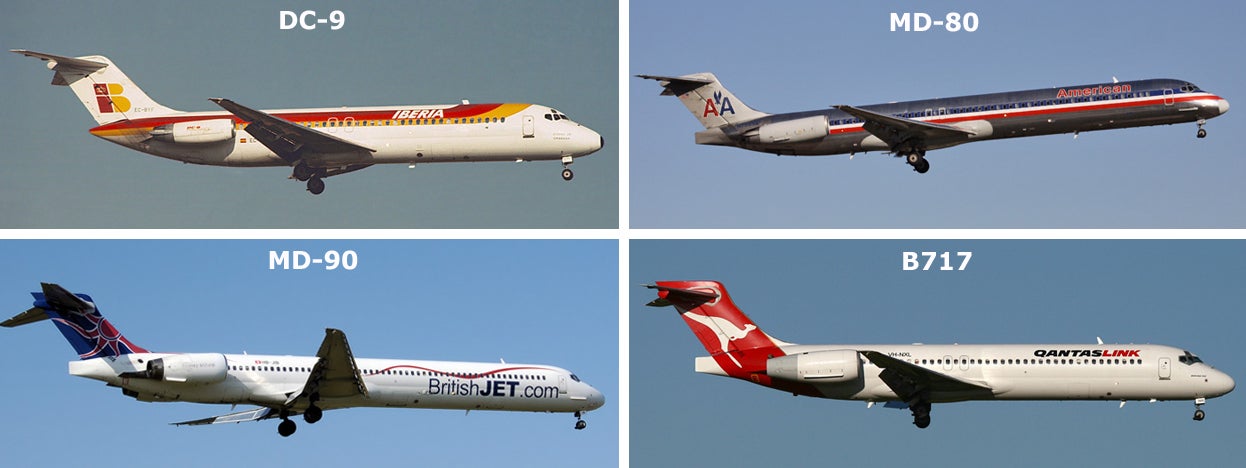
DC-9 series: Short fuselage, no strakes under the cockpit, pointy tail. (The last DC-9 variant, the DC-9-50, was equipped with strakes, but it retained the cone-shaped tail.)
MD-80 series: Longer fuselage, strakes under the cockpit, pinch tail, skinny engines.
MD-90 series: Longer fuselage, strakes under the cockpit, pinch tail, fat engines.
Boeing 717: Shorter body, no strakes under the cockpit, pinch tail, fat engines.
Basically, you can tell the DC-9 from the B717 by the tail cone, and the MD-80 series from the MD-90 series by the size of the engines.
(DC-9 photo by Pedro Aragão via Wikimedia Commons ; MD-80 photo by the author; MD-90 photo by Arpingstone via Wikimedia Commons ; B717 photo by Ian Lim via Wikimedia Commons )
!!! UNKNOWN CONTENT TYPE !!!
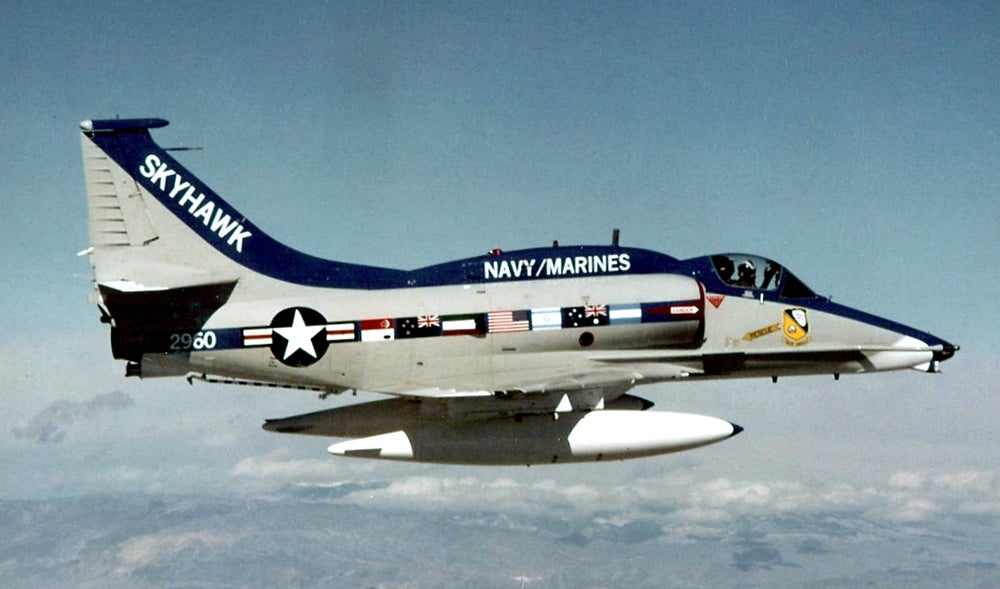
February 26, 1979 – Production of the Douglas A-4 Skyhawk ends. With delivery of the 2,960th A-4 to Marine Squadron VMA-331, an A-4M Skyhawk II, Douglas closed the book after 26 years of production on one of the most versatile jet fighters and storied jet fighters to serve the US Navy and US Marine Corps. The US Navy was seeking a replacement for the venerable, piston-powers Douglas AD (A-1) Skyraider , and, in an era when jet fighters were getting bigger and heavier, the Douglas Aircraft Company instead envisioned its replacement as a small yet powerful jet capable of delivering both conventional and nuclear weapons. In fact, the A-4 was so small that its wings did not need to be folded for carrier storage, and the final aircraft weighed half of what the Navy had specified for the new airplane. Designed by famed Douglas engineer Ed Heinemann , the Skyhawk became known affectionately as “Heinemann’s Hot Rod” by pilots who were impressed with its speed and performance. Pilots also nicknamed it the “Bantam Bomber,” “Mighty Mite” and “Scooter” as a reference to its size. First powered by a Wright J65 turbojet , then a Pratt & Whitney J52 beginning with the A-4E, the diminutive Skyhawk had a top speed of 670 mph. And though it was small, the Skyhawk packed a heavy punch. In addition to its two 20mm cannons, the A-4 could carry nearly 10,000 pounds of bombs on external hardpoints, more than a WWII-era Boeing B-17 Flying Fortress . The Skyhawk also pioneered the concept of “buddy refueling,” where one aircraft could refuel another of the same type in flight, removing the need for dedicated tanker aircraft.
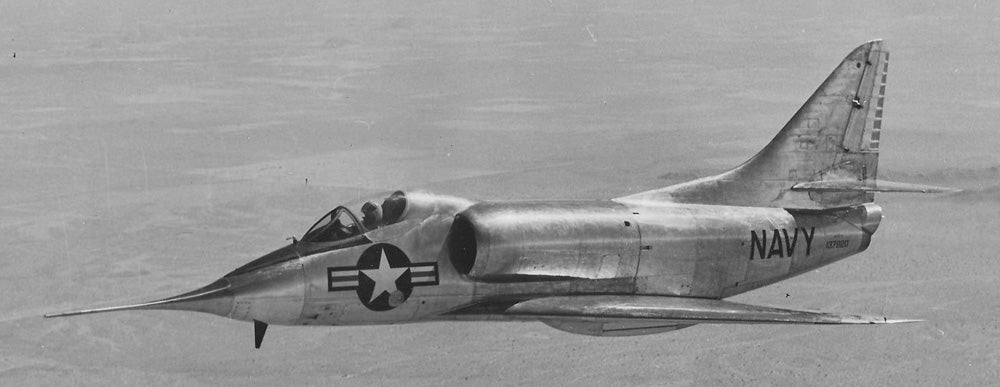
Following delivery to the Navy and Marine Corps in 1956, the A-4 first saw combat during the Vietnam War, launching its first air raids on North Vietnam in August of 1964. Until it was replaced by the LTV A-7 Corsair II , the Skyhawk was the primary ground attack aircraft in the first years of American involvement in Vietnam. Skyhawks also found distinction with the Israeli Air Force in the Yom Kippur War and with the Argentine Air Force during the Falklands War . Other international customers included Kuwait, Australia, New Zealand, Indonesia, Malaysia, and Brazil. After the Skyhawk was retired from US Navy fleet duty in 1991, it found a new lease on life as an adversary aircraft at the Navy’s Fighter Weapons School (commonly called Top Gun). The A-4 was chosen as the bandit aircraft because of its small size, excellent maneuverability and smokeless trail, often playing the role of the MiG-17 . It served in this aggressor role until 1999. In 1974, the the Navy’s Blue Angels demonstration squadron chose the Skyhawk as their new aircraft when they transitioned from the McDonnell Douglas F-4 Phantom II , a plane that was much larger and more costly to operate. The smaller and lighter aircraft, with a tighter turning radius, allowed for a more dynamic flight demonstration. The Blues flew the Skyhawk until 1986. The US Navy retired the last of its operational A-4s in 2003. (US Navy photos)
!!! UNKNOWN CONTENT TYPE !!!
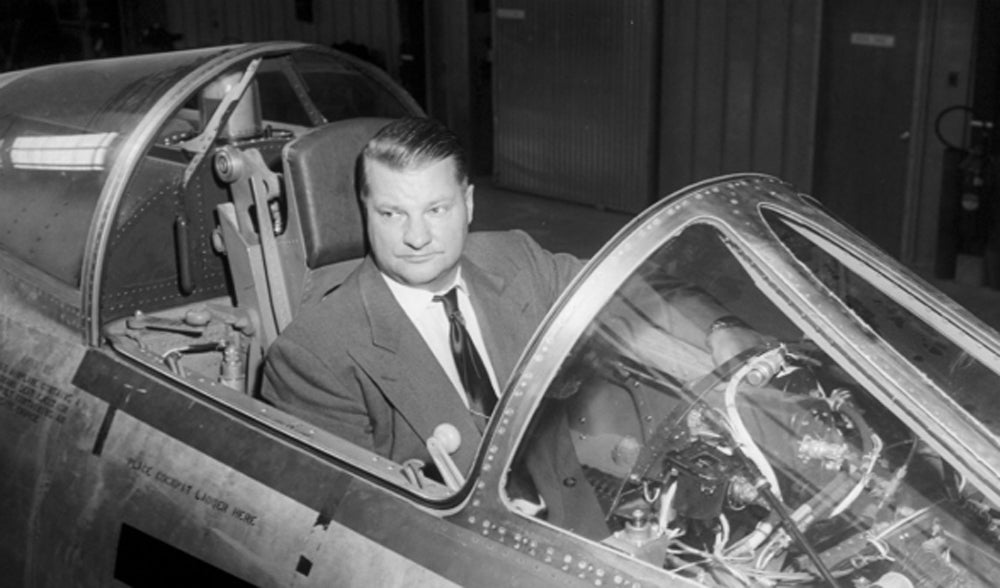
February 27, 1910 – The birth of Clarence “Kelly” Johnson. In the history of aviation, several design engineers stand out for having a significant impact on the development of the airplane, and one of the most influential and successful aircraft design engineers of all time was Kelly Johnson. Best known for his work for the Lockheed Corporation , Johnson was responsible for some of the world’s most iconic aircraft, including the P-38 Lightning , the Constellation airliner, P-80 Shooting Star , F-104 Starfighter , the U-2 , the A-12 , and the SR-71 Blackbird . Johnson first showed his interest in aviation at the age of 13, when he won a prize for aircraft design. He began his illustrious 50-year career with Lockheed when he joined the company in 1933 after obtaining a master’s degree in aeronautical engineering from the University of Michigan. His first job was as a tool designer earning $83 a month. Johnson first caught the eye of Lockheed executives when he brought to their attention an instability in the Lockheed Model 10 Electra which he had discovered while performing wind tunnel tests on the Electra in graduate school. When he proposed a successful fix to the instability problem by suggesting an H tail to replace the traditional stabilizer of the prototype, his bosses took note, and he was promoted to the rank of aeronautical engineer.

As he moved his way up through the company, Johnson went on to serve as a flight test engineer, stress analyst, aerodynamicist, and weight engineer, and by 1938 he had become a chief research engineer. During WWII, German advances in the area of jet aviation had the US Army Air Force on the back foot, and they were hard pressed to develop their own high performance jet fighters as quickly as possible. Johnson said that he could develop a jet fighter in 6 months, a promise he made good on when Lockheed introduced the Shooting Star, America’s first operational jet fighter, in January of 1944 after only 143 days of development. In spite of the remarkably short development time, the Shooting Star was too late to see actual combat in WWII, though it would go on to serve with distinction in the Korean War. Johnson’s rise through the Lockheed Corporation continued, and by 1952 he had become the chief engineer of Lockheed’s Burbank plant, and in 1956 he was appointed Vice President of Research and Development. In 1958, Johnson was named Vice President of Advanced Development Projects (ADP), a position that would garner Johnson his greatest notariety when the ADP became known as the Skunk Works . Here, Johnson and his team of engineers would create some of the aircraft he is best known for: the supersonic F-104 Starfighter, the high-flying U-2 reconnaissance plane, and the untouchable SR-71 Blackbird. For his work on the F-104 and SR-71, Johnson was awarded 2 Collier Trophies , an individual feat only matched by Glenn Curtiss . His other honors and awards are too numerous to mention. Johnson died on December 21, 1990 at the age of 80. (Photo via Lockheed )
!!! UNKNOWN CONTENT TYPE !!!
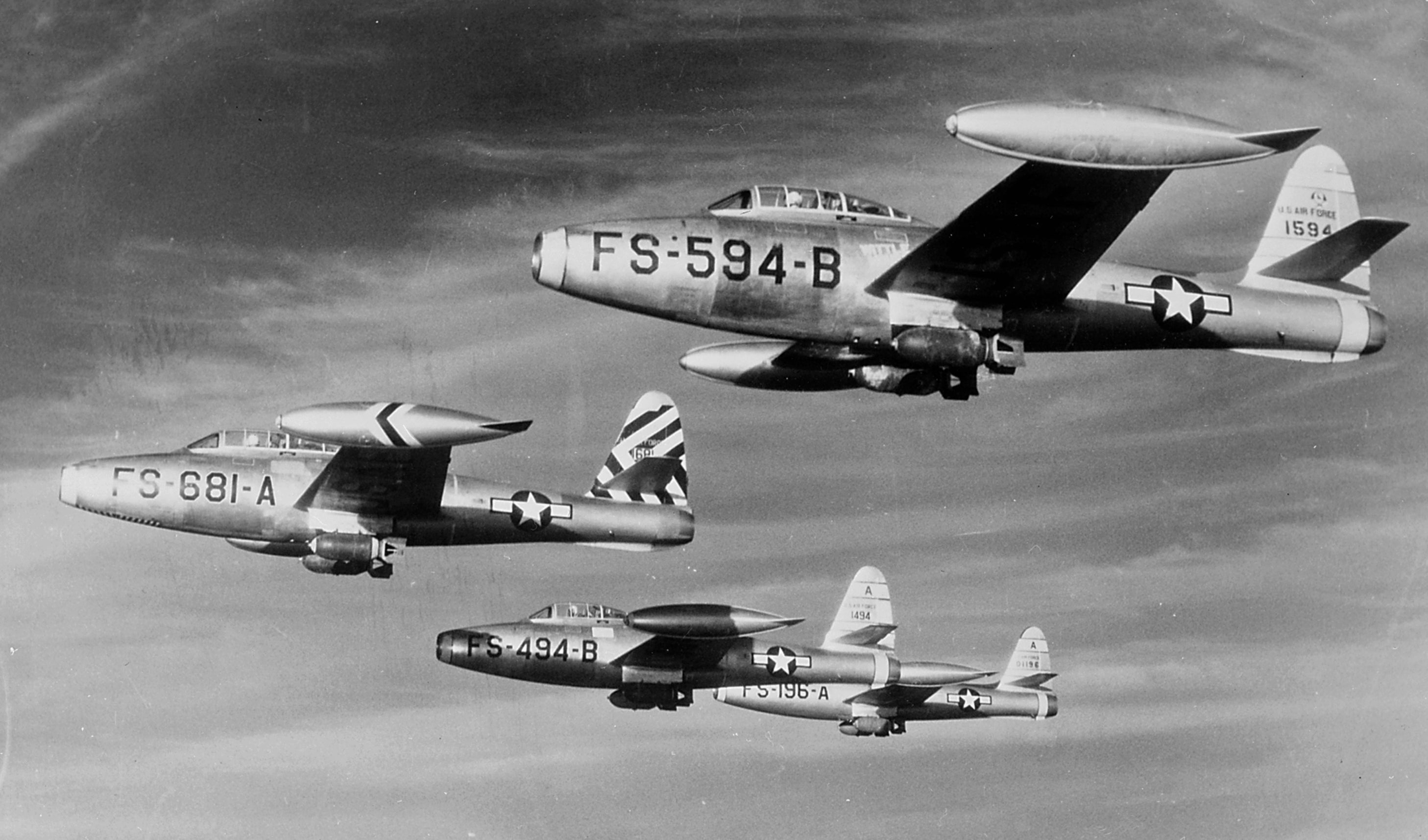
February 28, 1946 – The first flight of the Republic F-84 Thunderjet. The history of Republic Aviation begins with Alexander de Serversky , a WWI veteran and émigré from Russia who started an airplane factory in the US that bore his name. True to his Russian roots, he hired a number of designers from his home country, and among them was Alexander Kartveli , a native of Tbilisi, Georgia. When Seversky was forced out as the head of the Seversky Aero Company in 1939, the company reorganized as Republic Aviation, but Kartveli stayed on, becoming the company’s chief engineer and designing arguably one of the greatest fighter-bombers of WWII, the P-47 Thunderbolt . By 1944, Kartveli had begun initial design work on an aircraft that would be powered by the new centrifugal compressor turbojet which had been pioneered separately by Frank Whittle in England and Hans von Ohain in Germany. At first, Kartveli experimented with putting the engine into the fuselage of a P-47, but it proved too bulky, and the concept was abandoned. On September 11, 1944, the US Army Air Forces issued a requirement for a new day fighter powered by the General Electric/Allison J35 axial flow turbojet, a much slimmer engine that was more suited to being fitted inside the fuselage of a slender jet. The new fighter was required to have a top speed of 600 mph and be armed with either six .50 caliber machine guns or four .60 caliber machine guns. The USAAF ordered three prototypes from Republic, the first of which took its maiden flight on February 28, 1946. The second prototype flew six months later and immediately established a new world record speed of 611 mph. Instead of building a third prototype, production began on the F-84B, which was fitted with an ejection seat and wingtip fuel tanks for increased range. The Air Force received the first Thunderjets in 1947, but teething problems plagued the new fighter. Operational speeds were limited to Mach 0.8 due to problems with control reversal , and acceleration was limited to 5.5g due to wrinkling of the fuselage skin. These problems were exacerbated by a chronic shortage of parts for the Allison engines, but the entire F-84B fleet was grounded in 1948 because of structural failures. The situation looked grim the the Thunderjet, and there was talk of canceling the entire program. Fortunately for the Thunderjet, many of the structural problems were already being addressed in the F-84D, which featured thicker, stronger wings, an upgraded and winterized fuel system, and the addition of small wings to the wingtip fuel tanks to eliminate stress on the wings during high g maneuvers.
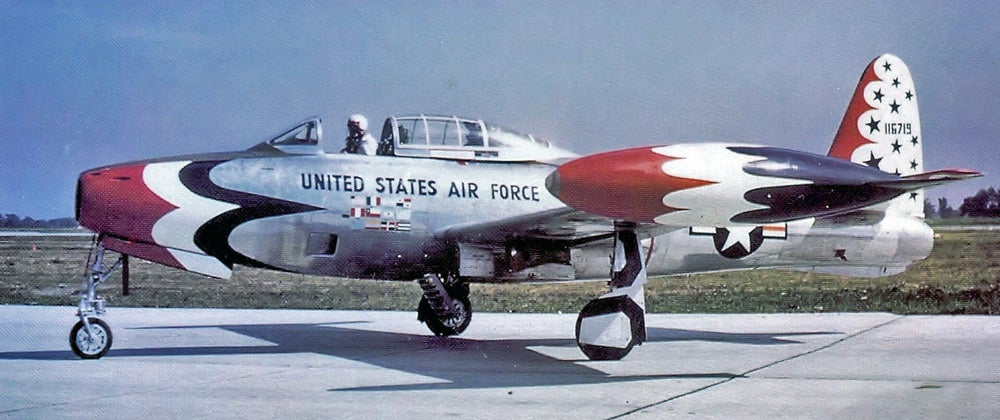
Nevertheless, the F-84 served with great distinction in the Korean War. Initially, they were used as bomber escorts, and while it was outmatched by the Russian-built MiG-15 , the F-84 scored its first air-to-air kill in 1951, though two Thunderjets were lost in the encounter. Ultimately, F-84 pilots claimed victories over 8 MiG-15s over the course of 86,408 sorties, and dropped 55,586 tons of bombs. Armed with bombs and rockets to supplement its machine guns, the Thunderjet became a potent ground attack aircraft, claiming 60% of all ground targets destroyed during the war. The F-84 was also the first American fighter to carry out mid-air refueling. The Thunderjet was widely exported to America’s allies, and it was also the first aircraft flown by the US Air Force Thunderbirds demonstration team from 1953-1955. Just over 7,500 Thunderjets were produced, and the fighter was retired from frontline Air Force service in the mid-1960s. (US Air Force photos)
!!! UNKNOWN CONTENT TYPE !!!
!!! UNKNOWN CONTENT TYPE !!!
!!! UNKNOWN CONTENT TYPE !!!
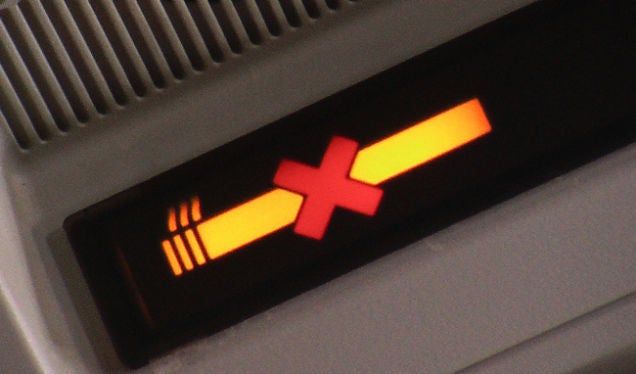
February 25, 1990 – Smoking is banned on all US domestic flights. Consumer protection advocate Ralph Nader was the first to call for a smoking ban on US airlines, and United Airlines was the first to implement a smoking section on their airliners in 1971. By April 1988, a smoking ban was instituted on flights of 2 hours or less and, by 1990, smoking was banned on all domestic flights of 6 hours or less. By 2000, the ban was further extended to all domestic and international flights. Smokers who violate the ban face a fine of up to $500 or 10 days in prison. Pilots, however, were allowed to continue smoking on the flight deck over safety concerns caused by nicotine withdrawal in chronic smokers, though the FAA extended the ban to the flight deck in 1992. The use of E-cigarettes, or “vaping.” is also prohibited. (Photo by Kashif Mardani via Wikimedia Commons )
!!! UNKNOWN CONTENT TYPE !!!
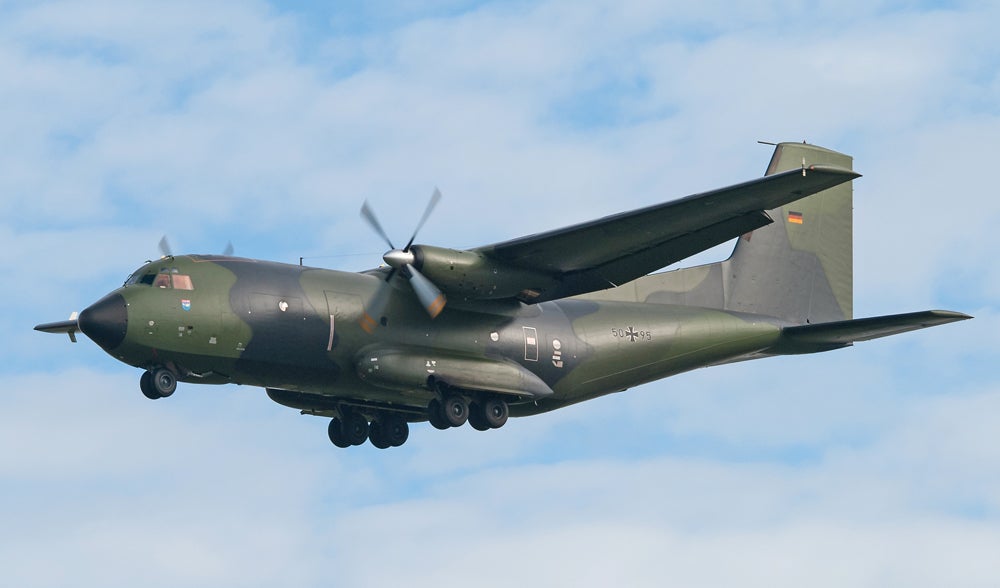
February 25, 1963 – The first flight of the Transall C-160, a twin-turboprop military transport and cargo aircraft designed as a joint venture between Germany and France. “Transall” is an acronym for Transporter Allianz , and the C-160 was developed to satisfy requirements that arose in the late 1950s for a new transport aircraft to replace the Nord Noratlas . The Transall consortium was formed in 1959 and, following a delay in production while Lockheed unsuccessfully marketed the Lockheed C-130 Hercules to Germany, the first production aircraft were delivered in 1967. The C-160 has become one of the few aircraft to see over 50 years of service, and 214 were built between 1965-1985. (Photo by bomberpilot via Wikimedia Commons )
!!! UNKNOWN CONTENT TYPE !!!
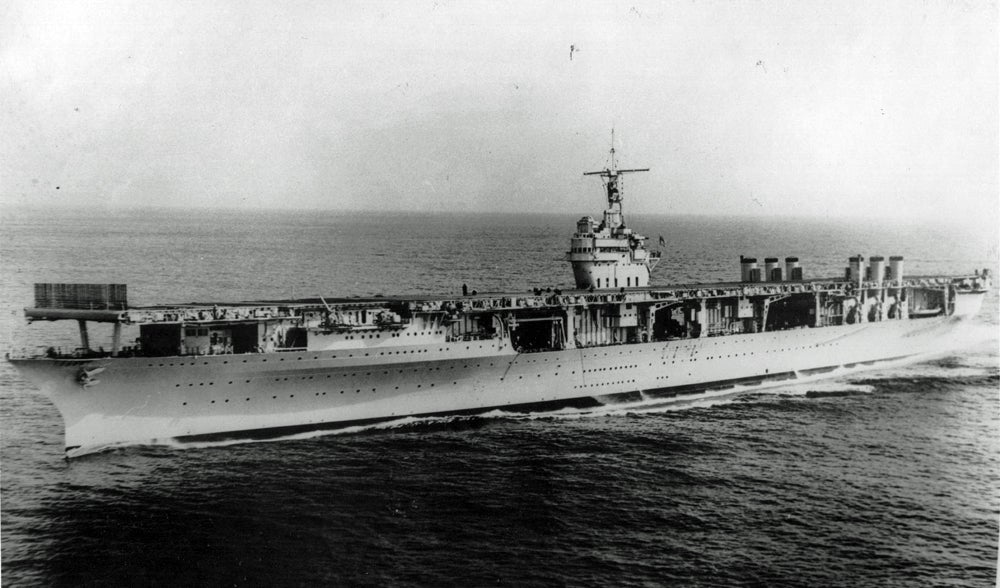
February 25, 1933 – The launch of the USS Ranger (CV-4), the first US Navy ship to be designed from the keel up as an aircraft carrier. Like the Navy’s first carrier, the USS Langley (CV-1), which had been converted from a collier, Ranger was not designed with an island superstructure, though one was added later. Though Ranger was too slow to keep pace with more modern carriers plying the Pacific Ocean, she did serve in the Atlantic, where the carrier provided air support for the landings in North Africa during Operation Torch in November 1942. In 1943, Ranger participated in raids against German shipping in the North Atlantic as part of Operation Leader , and served as a training carrier late in the war. Ranger was scrapped in 1947. (San Diego Air and Space Museum photo)
!!! UNKNOWN CONTENT TYPE !!!

February 26, 1937 – The first flight of the Fiat G.50 Freccia , a single-engine fighter flown by the Italian Air Force ( Regia Aeronautica ) in WWII and Italy’s first single-seat all-metal monoplane. It was also the first Italian aircraft with retractable landing gear and an enclosed cockpit to enter production. The Freccia ( Arrow ) was powered by a Fiat A.74 14-cylinder radial engine and, with a maximum speed of 292 mph, was considered quite fast for its day. It was also highly maneuverable, but, armed with only a pair of 12.7mm machine guns, suffered from a lack of firepower. The Freccia first saw service in the Battle of Britain, but it was far outclassed by more modern fighters. They were somewhat more successful fighting in the Mediterranean, but the type found its greatest success in the hands of Finnish pilots, who enjoyed a 33/1 kill ratio against Russian fighters. (Photo author unknown)
!!! UNKNOWN CONTENT TYPE !!!

February 26, 1890 – The birth of Chauncey Milton Vought,
an American aviation pioneer, engineer, aircraft designer, and co-founder of the Lewis and Vought Corporation. The company he founded has gone through numerous associations: Lewis and Vought, Chance Vought, Vought Sikorsky, Ling-Temco-Vought (LTV) Aerospace, Vought Aircraft Companies and Vought Aircraft Industries. Vought himself was not around to see the tremendous growth of the company he founded, nor did he see any of the remarkable aircraft the company built, such as the
F4U Corsair
. Vought died of
septicemia
in 1930 at the age of 40. He was inducted into the
National Aviation Hall of Fame
in 1989.
(Photo via
Frontiers of Flight Museum
)
!!! UNKNOWN CONTENT TYPE !!!
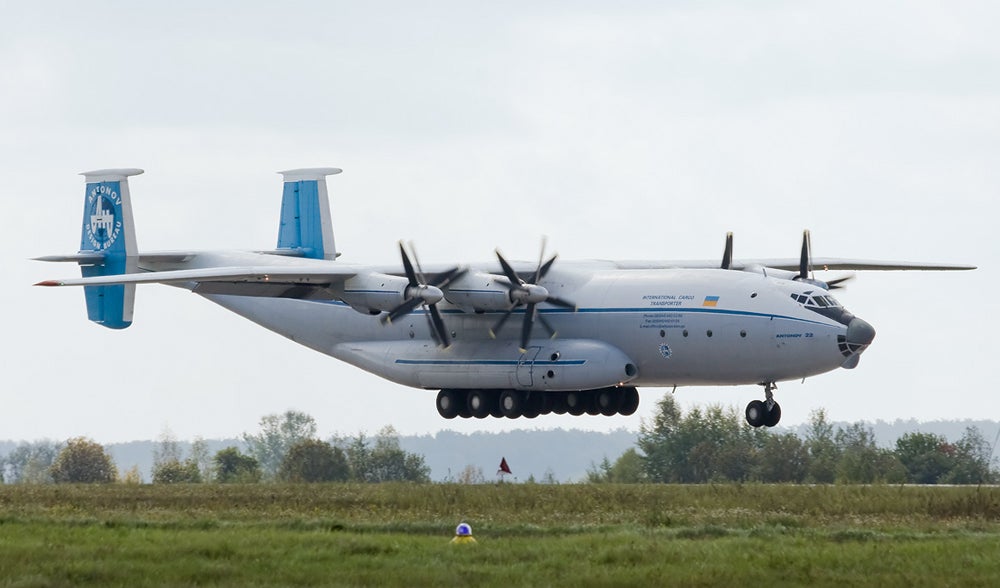
February 27, 1965 – The first flight of the Antonov An-22 Antei , a four-engine cargo and transport aircraft and the world’s largest turboprop-powered aircraft. The An-22, NATO reporting name Cock , is also the first wide-body aircraft developed by the Soviet Union. The An-22 was developed as a strategic airlifter, specifically to deliver airborne troops and their armored vehicles. Powered by 4 Kuznetsov NK-12 turboprops turning contra-rotating propellors, the An-22 can carry 290 passengers or 80,000 pounds of payload while operating from rough or unimproved airstrips. The An-22 was introduced in 1967 and remains in active service, though it is slowly being replaced by the Antonov An-124 . (Photo by Dmitry A. Mottl via Wikimedia Commons )
!!! UNKNOWN CONTENT TYPE !!!
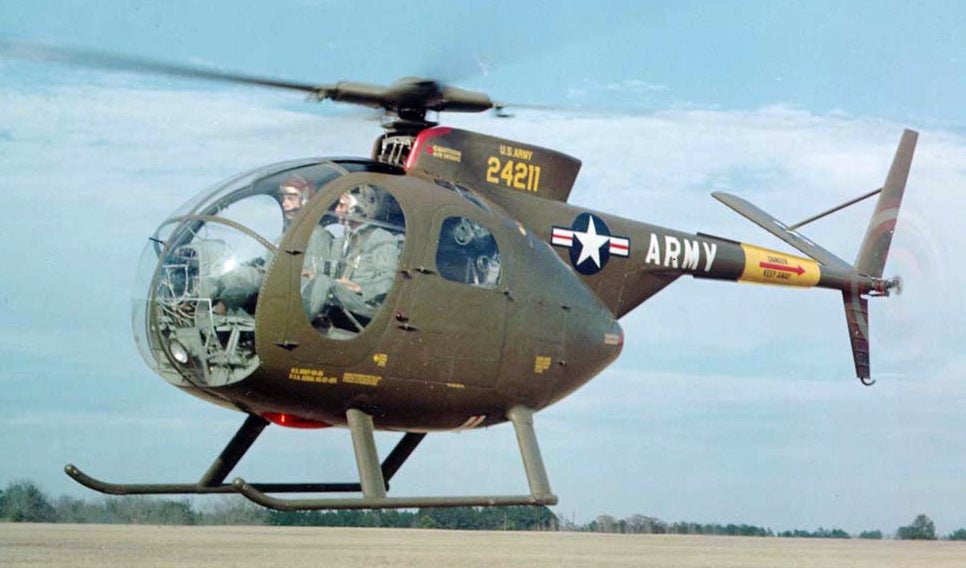
February 27, 1963 – The first flight of the Hughes OH-6 Cayuse, a small helicopter used by the US Army for personnel transport, escort, attack missions and observation. Developed from a 1960 US Army request for a light observation helicopter (LOH, commonly called “Loach”), the Cayuse was the winner in a competition between Hughes and Fairchild-Hiller, with Hughes awarded a production contract in 1965. When all fixed-wing aircraft were transferred to the Air Force in 1964, the Cayuse replaced the Cessna O-1 Bird Dog as the Army’s primary reconnaissance aircraft in Vietnam. The OH-6 also set 23 world records for speed, endurance and time to climb. The OH-6 and its civilian counterpart, the MD 500, remain in production. (US Army photo)
!!! UNKNOWN CONTENT TYPE !!!
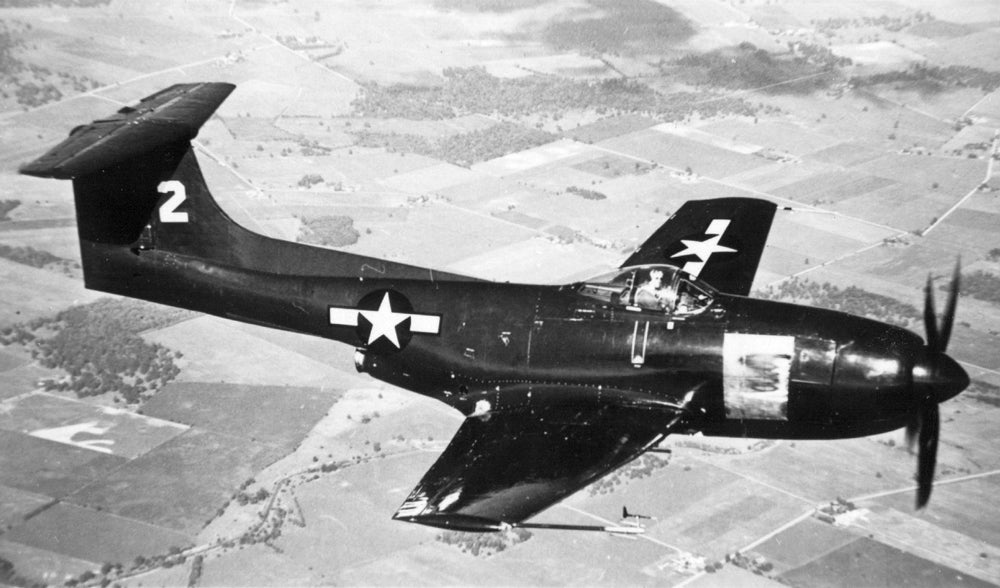
February 27, 1945 – The first flight of the Curtiss XF15C, a mixed-propulsion prototype US Navy fighter that was powered by a Pratt & Whitney R-2800 18-cylinder radial in the front (the same engine used in the Republic P-47 Thunderbolt , Vought F4U Corsair and Grumman F6F Hellcat ) and an Allis-Chalmers J36 turbojet in the rear (the J36 was an American license-built version of the British Goblin turbojet). Three prototypes were built, and while the arrangement showed promise, rapid advances in jet engine development caused the Navy to lose interest in the mixed-power concept and the project was canceled in 1946. The first airframe was lost to a landing accident, the second was scrapped, and the third resides at the Quonset Air Museum in Rhode Island. (US Navy photo)
!!! UNKNOWN CONTENT TYPE !!!
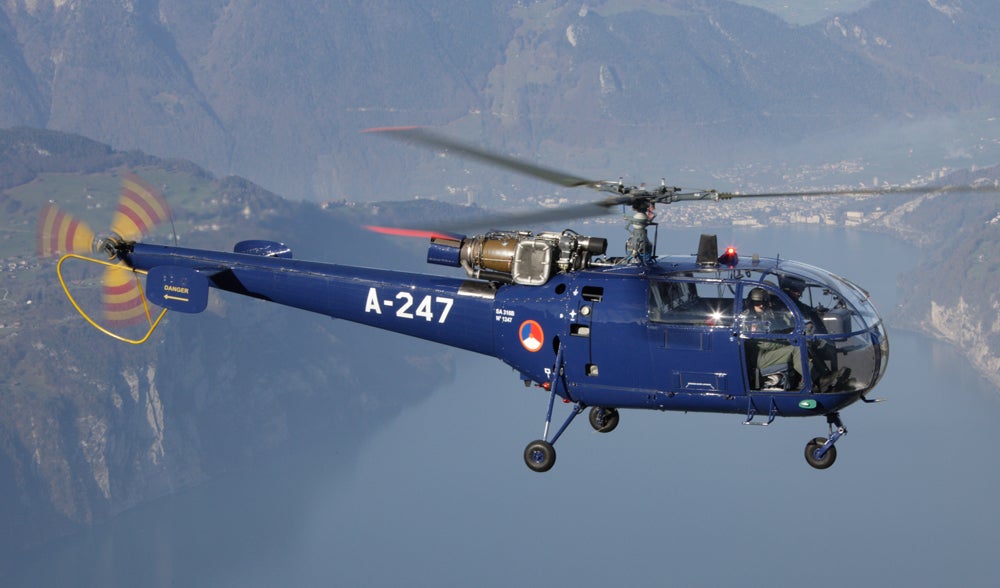
February 28, 1959 – The first flight of the Aérospatiale Alouette III,
a single-engine utility helicopter developed by
Sud Aviation
as a larger variant of the
Alouette II
. Production of the Alouette III was performed by
Aérospatiale
, and the helicopter was also built under license in India and Romania. Over 2,000 copies of the Alouette III were produced between 1961-1985, and it remains in production in India. With a crew of 2 pilots, the Alouette III has space for 5 passengers and is used primarily for civilian or troop transport and search and rescue (SAR), though a number of variants were developed into helicopter gunships by Romania and South Africa.
(Ministerie van Defensie photo via
Wikimedia Commons
)
!!! UNKNOWN CONTENT TYPE !!!
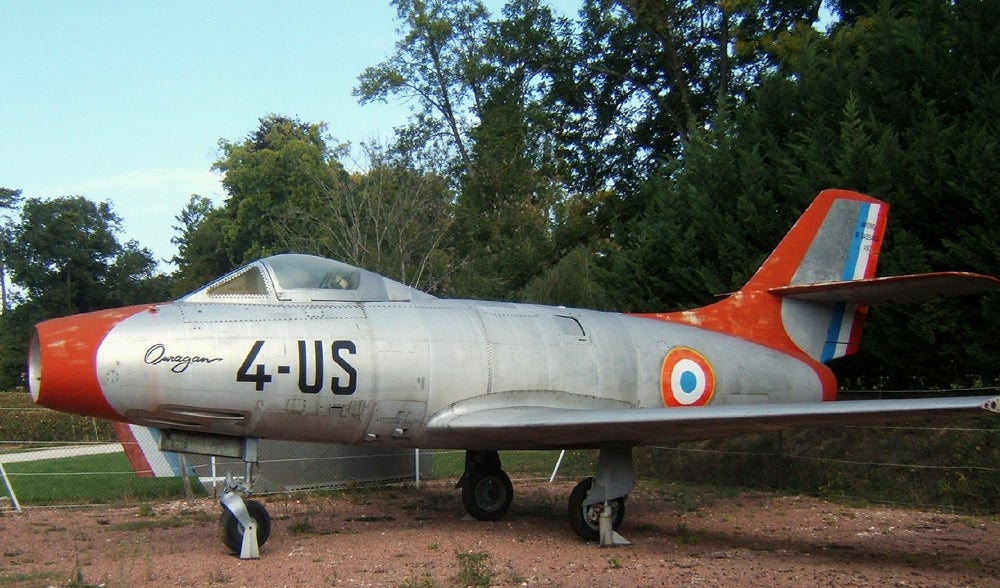
February 28, 1949 – The first flight of the Dassault Ouragan,
the first French-designed jet fighter to enter production. As an occupied country, France was largely left out of the rapid development of aircraft during WWII. Designer
Marcel Dassault
and the Ouragan (Hurricane) were instrumental in reestablishing France in the world of modern aircraft design and production. The Ouragan was powered by a single
Rolls-Royce Nene
turbojet, had a top speed of 584 mph and was armed with four 20mm cannons. It could also carry up to 16 rockets or 5,000 pounds of bombs. The Ouragan entered service with the Armée de l’Air in 1951, replacing the
de Havilland Vampire
, and also served in India, Israel and El Salvador.
(Photo by Groumfy69 via
Wikimedia Commons
)
!!! UNKNOWN CONTENT TYPE !!!
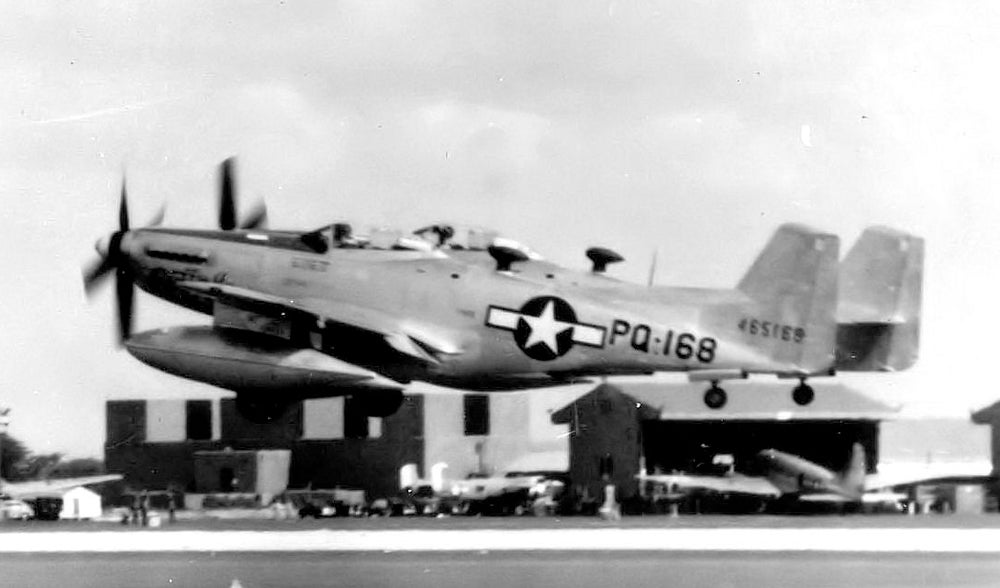
February 28, 1947 – The crew of a North American F-82 Twin Mustang set a world record for the longest and fastest flight of a piston-powered fighter.
To demonstrate the long distance capabilities of the F-82, US Army Air Forces pilot
Captain Robert Thacker
, with Lieutenant John Ard as co-pilot, completed a flight from
Hickam Field
in Hawaii to
La Guardia Field
in New York City in a
North American F-82B
nicknamed
Betty Jo
(they took off on the 27th, but landed on the 28th). The nonstop flight, without aerial refueling, lasted just over 14 hours at an average speed of 342 mph. Thacker’s and Ard’s flight set the world record for the longest non-stop flight by a piston-powered fighter, as well as the fastest non-stop flight by piston-powered aircraft from Hawaii to New York City, both records that still stand to this day.
(US Air Force photo)
!!! UNKNOWN CONTENT TYPE !!!
!!! UNKNOWN CONTENT TYPE !!!
!!! UNKNOWN CONTENT TYPE !!!
!!! UNKNOWN CONTENT TYPE !!!
!!! UNKNOWN CONTENT TYPE !!!
!!! UNKNOWN CONTENT TYPE !!!
!!! UNKNOWN CONTENT TYPE !!!
If you enjoy these Aviation History posts, please let me know in the comments. And if you missed any of the past articles, you can find them all at Planelopnik History . You can also find more stories about aviation and aviators at Wingspan and Planes You’ve (Probably) Never Heard Of .
!!! UNKNOWN CONTENT TYPE !!!
 "RamblinRover Luxury-Yacht" (ramblininexile)
"RamblinRover Luxury-Yacht" (ramblininexile)
02/28/2017 at 12:55, STARS: 3
As an aside, the NK-12 turboprops are abominably, earthshakingly, thunderously, literal ear-bleedingly loud. If I’m not mistaken the prop tips are transonic, and the Tupolev airliner developed from the Bear needed ear protection for any serious trip. I can’t imagine the Antei is pleasant to be in the cargo area of.
 "For Sweden" (rallybeetle)
"For Sweden" (rallybeetle)
02/28/2017 at 12:55, STARS: 4
Kinja hates Long Beach
 "SidewaysOnDirt still misses Bowie" (sidewaysondirt)
"SidewaysOnDirt still misses Bowie" (sidewaysondirt)
02/28/2017 at 13:17, STARS: 4
This week in kinja’d posts.
 "WilliamsSW" (williamssw)
"WilliamsSW" (williamssw)
02/28/2017 at 13:25, STARS: 1
I’d love to hear a TU-95 or -114 live, just for the experience. I thought the tips were actually supersonic (which never really made sense to me, but I thought I’ve read that somewhere).
 "RamblinRover Luxury-Yacht" (ramblininexile)
"RamblinRover Luxury-Yacht" (ramblininexile)
02/28/2017 at 13:37, STARS: 1
The Republic Thunderscreech had supersonic prop tips - I’m not sure if the Bear’s actually broke the barrier or just went right up to it. It’s not too crazy that it’s the case - for a given cross-section, you can only turn out a certain amount of thrust with a propellor, you hit diminishing returns with increased blade count, etc. etc. The only single prop-path way to increase the cross-section of air you’re moving is to increase the prop diameter, and the bigger the prop, the faster the tip is traveling to move that critical inner pocket of air. Or, the faster you want to move the cross-section (more air, more thrust), the faster the prop. Hence supersonic, in either case.
Jets can only get away with what they do because they’re not *just* obtaining thrust from displaced air, but from compression and expansion as well. Hence smaller volumes needing to be shifted where it matters.
With the Bear, it might also be possible that the contra-rotation creates eddies for the rear prop with instantaneous supersonic behavior by increasing the relative speed of air in the opposite rotational direction right when the front prop is only transonic. Eh, maybe, I don’t know. Certainly might also be pockets of instantaneous compression going “bang” thousands of times a minute.
 "WilliamsSW" (williamssw)
"WilliamsSW" (williamssw)
02/28/2017 at 14:17, STARS: 0
Interesting - thanks for the response. My issue is that I know just enough to be dangerous about this stuff- -I have an engineering degree, but don’t use it any more, and probably mis-remember a lot of it, anyways. I would have thought that there would be diminishing returns from increasing tip speed between Mach 0.9 and 1.0, due to high drag, and perhaps some airfoil design issues in that range and beyond, too. But maybe not, and I’m certainly clueless about what effect the counterrotating props has on all of this.
 "RamblinRover Luxury-Yacht" (ramblininexile)
"RamblinRover Luxury-Yacht" (ramblininexile)
02/28/2017 at 14:42, STARS: 0
Every direction you go, you get some kind of diminishing return. In the case of the Thunderscreech, they were counting on enough return from the rest of the prop, probably, although in more recent years the idea of constructive pressure wave formation so to speak took off. In any case, increased drag on the prop isn’t an issue to increased speed on the whole airframe if you’ve got the power to spare, which they probably thought they did.
At any rate, the math on it is pretty simple, if I’ve got a good framework for descriptive guesswork. (It’s possible I don’t, that much.). If you’re displacing about an equal mass of air to the plane at a given relative speed (plane mass/air mass going opposite directions at the same relative speed), then your tip speed needs to at least somewhat approach the airspeed divided by the tangent of the prop AOA at the tip. Because: the further out you go, the larger the band of air displaced by a given length of the prop, so the outer sections are most important, and the tangent is a loose approximation of the movement induced by the prop on itself at a given angle. If you could somehow have close to a 45 degree AOA at the tip, then your tip speed would somewhat resemble your forward airspeed - I think. Obviously, if you displace more air mass than the plane, then you don’t have to displace it quite as fast, but that only partly solves the problem, because air is light and planes are not.
A normal airfoil is in stall at a little over 20 degrees, which would mean a Thunderscreech only doing Mach .4. It was tested to .7, so obviously a good prop can do much better than a normal airfoil, but that’s still only around a 30 degree effective average AOA in the tip region... minus pickups like moving excess air, Bernouilli, etc. etc.
Bottom line: if you were to have a truly transonic prop plane in level flight, you would need *very* supersonic tip speeds or a metric assload of air getting moved - which tends to require a large prop, which produces very supersonic tip speeds...
 "RamblinRover Luxury-Yacht" (ramblininexile)
"RamblinRover Luxury-Yacht" (ramblininexile)
02/28/2017 at 14:58, STARS: 1
I forgot something: the effective AOA at the tip isn’t actually the static (resting) AOA of the tip, because the relative motion of it and the air is hideously complicated - as the prop is moving forward as well as “across”. I think the general idea is close, but the AOA as is visible at the prop tip is... complicated.
 "WilliamsSW" (williamssw)
"WilliamsSW" (williamssw)
02/28/2017 at 15:17, STARS: 0
Good oppo, thanks! Yeah, understanding AOA on a prop tip is way above my understanding. It makes sense that there are diminishing returns in any direction you go with prop diameter, speed, blade count, etc. - - It seems that the NK-12 was pushed in every direction, and damn the noise, in order to push the power/speed as far as possible. I hadn’t really thought about what it would take to move the amount of air necessary to drive a TU-95 at the speeds it flies—
 "RamblinRover Luxury-Yacht" (ramblininexile)
"RamblinRover Luxury-Yacht" (ramblininexile)
02/28/2017 at 15:28, STARS: 1
I have an engineering degree gathering *some* dust, but it definitely wasn’t in aerodynamics. I mean, I’ve done fluid mechanics and enthalpy calculations enough to be ashamed at how much I’m oversimplifying things, but I think the fundamental premise - no transonic prop plane without supersonic prop and no close-to-transonic prop plane without transonic prop - can definitely be sanity-checked this way. Even if turboprops are cheaty bastards about thrust and other things like the Meredith Effect come in as well.
Of course, wouldn’t there also be an innate requirement for higher relative velocity of air to be efficient, as the energy of the displaced air might need to reflect energy loss to drag as well as the kinetic energy of the plane, at the same time as balancing the momentum eqNO, BAD RAMBLINROVER. STOP

02/28/2017 at 15:55, STARS: 0
Is it still kinja’d if the problem is really Amazon’s?
 "WilliamsSW" (williamssw)
"WilliamsSW" (williamssw)
02/28/2017 at 16:05, STARS: 0
But this is so much more interesting than work!! Haha -
 "WilliamsSW" (williamssw)
"WilliamsSW" (williamssw)
02/28/2017 at 16:07, STARS: 0
Great post, as always! Is it me, or did the break invigorate you? It seems like the renewed posts have gotten longer and more detailed, which I love - thanks!
 "ttyymmnn" (ttyymmnn)
"ttyymmnn" (ttyymmnn)
02/28/2017 at 16:22, STARS: 0
Thanks. I don’t know if I feel enlivened per se, but I think my writing has gotten better. Revisiting the older posts has allowed me to add information that I skipped the first time around, and I’m working hard on tightening up the writing, as I’m not under the same amount of pressure to produce words. It also allows me to provide a deeper context. I believe that it is not enough to simply describe an aircraft. Numbers and engines are interesting to a point, but it’s infinitely more interesting to learn how an aircraft grew out of a specific need, or was an outgrowth of an earlier aircraft, or took advantage of a new technology. History never happens in a vacuum, and the events surrounding something are, at least to me, the most fascinating part of it.
Thanks for the kind words, and thanks for reading.

02/28/2017 at 17:12, STARS: 2
Oh hey, all the pictures are un-Kinja’d now.
It’s so odd seeing where the A-4 started off, and how it looked at the end of it’s run. Like the rest of us, it starts out sleek, and picks up lumps and bumps and protrusions as it goes along....
 "ttyymmnn" (ttyymmnn)
"ttyymmnn" (ttyymmnn)
02/28/2017 at 17:14, STARS: 0
How true! The A-4 must have been one hell of a hot rod at its lightest. But it’s also a testament to a fighter that was so adaptable.
 "rillweid - Now with more TRD and less TDI" (rillweid)
"rillweid - Now with more TRD and less TDI" (rillweid)
02/28/2017 at 21:06, STARS: 0
Great job on these. Can’t imagine how much effort these take.
 "ttyymmnn" (ttyymmnn)
"ttyymmnn" (ttyymmnn)
02/28/2017 at 21:16, STARS: 0
Thanks. I’m into my third year of these posts, so there is a fair bit of reused material, but it all gets a good rewrite before I post. It does take more time than I should be spending on it, but it’s a labor of love. Thanks for reading.
 "Viggen" (viggen37)
"Viggen" (viggen37)
03/01/2017 at 18:21, STARS: 0
Hell yeah I share my birthday with the DC-9
 "ttyymmnn" (ttyymmnn)
"ttyymmnn" (ttyymmnn)
03/01/2017 at 18:49, STARS: 0
You’re 52 years old?
Happy Birthday to you both!
 "Viggen" (viggen37)
"Viggen" (viggen37)
03/01/2017 at 19:00, STARS: 0
lol no I’m 24.